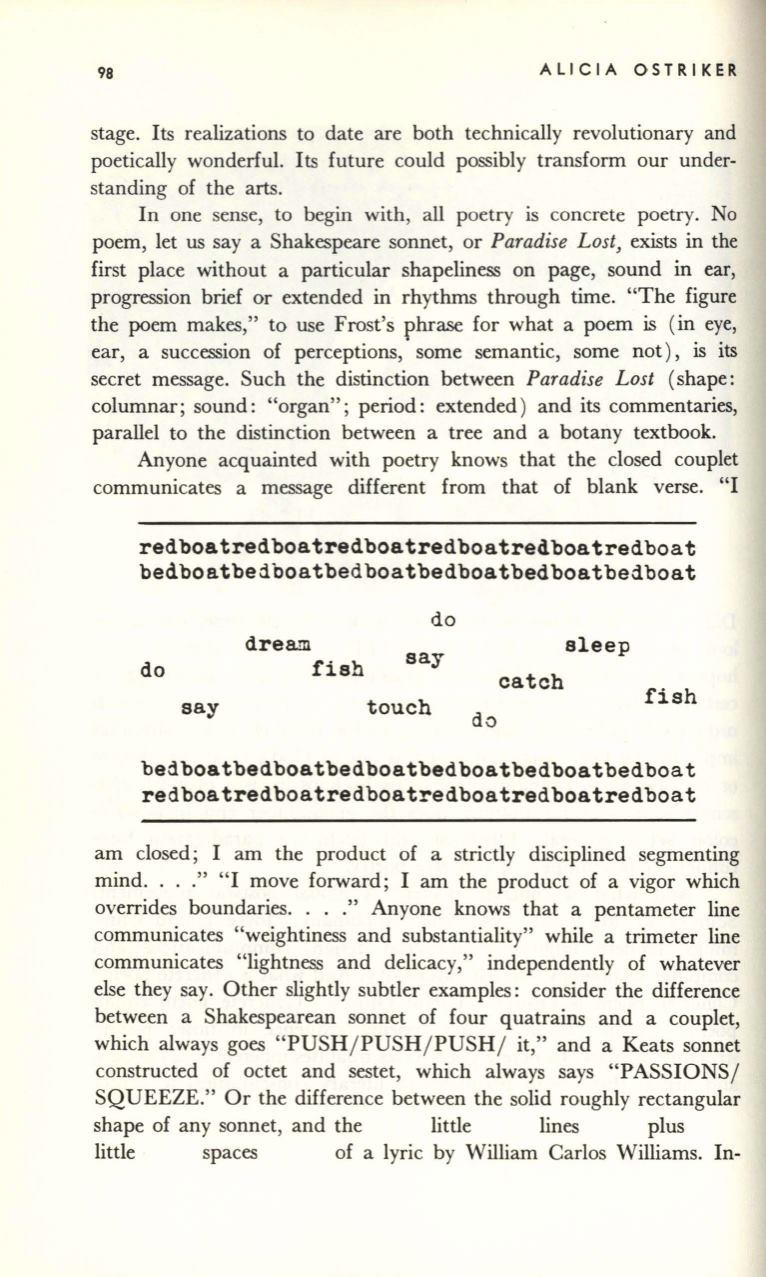
98
ALICIA OSTRIKER
stage. Its realizations to date are both technically revolutionary and
poetically wonderful. Its future could possibly transform our under–
standing of the arts.
In one sense, to begin with, all poetry is concrete poetry. No
poem, let us say a Shakespeare sonnet, or
Paradise Lost,
exists in the
first place without a particular shapeliness on page, sound in ear,
progression brief or extended in rhythms through time. "The figure
the poem makes," to use Frost's phrase for what a poem is (in eye,
ear, a succession of perceptions, some semantic, some not), is its
secret message. Such the distinction between
Paradise Lost
(shape:
columnar; sound: "organ"; period: extended) and its commentaries,
parallel to the distinction between a tree and a botany textbook.
Anyone acquainted with poetry knows that the closed couplet
communicates a message different from that of blank verse. "I
redboatredboatredboatredboatredboatredboat
bedboatbedboatbedboatbedboatbedboatbedboat
do
do
dream
fish
say
touch
sleep
catch
fish
say
do
bedboatbedboatbedboatbedboatbedboatbedboat
redboatredboatredboatredboatredboatredboat
am closed; I am the product of a strictly disciplined segmenting
mind...." "I move forward; I am the product of a vigor which
overrides boundaries...." Anyone knows that a pentameter line
communicates "weightiness and substantiality" while a trimeter line
communicates "lightness and delicacy," independently of whatever
else they say. Other slightly subtler examples: consider the difference
between a Shakespearean sonnet of four quatrains and a couplet,
which always goes "PUSH/PUSH/PUSH/ it," and a Keats sonnet
constructed of octet and sestet, which always says "PASSIONS/
SQUEEZE." Or the difference between the solid roughly rectangular
shape of any sonnet, and the
little
lines
plus
little
spaces
of a lyric by William Carlos Williams. In-


